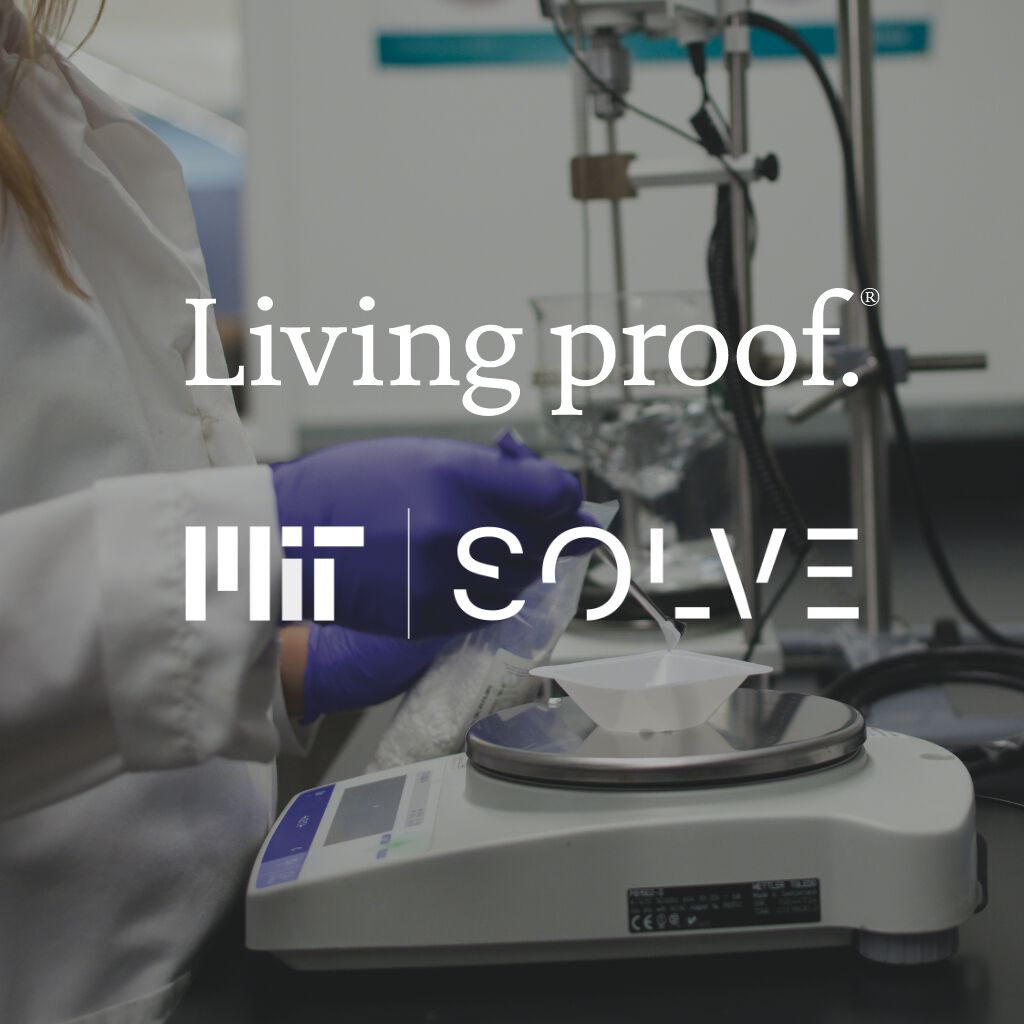
Meet the Winners of Living Proof’s Women’s Leadership Solution Prize in Collaboration with MIT Solve
While there are many challenges in today’s world that can feel overwhelming, there’s some good news: There are just as many solutions in the works, too. Take, for instance, MIT Solve, an annual initiative that invites entrepreneurs and innovators to submit their ideas for overcoming global concerns, such as healthcare inequity. The best solutions win funding and other prizes.
This year, we were thrilled to share that Living Proof’s CEO, Zach Reiken, would be a member of MIT Solve’s 2022 Global Challenge Leadership Group, a role that entailed helping with outreach and recruitment, supporting the work of the 2022 Solver Class, and choosing the most promising solutions.
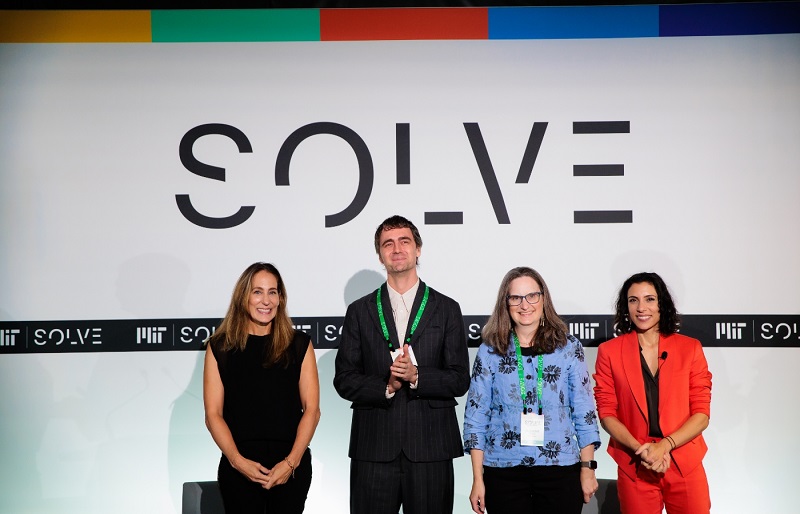
Now, we’re equally excited to share two companies that have won the Living Proof Prize: Women’s Leadership Solutions, which offers funding and support, with Reiken’s input. SameSame is on a mission to offer tailored support to LGBTQI+ youth on a global scale, while Blue Butterfly works with local partners in Haiti to develop and distribute high-quality, educational media for children, inspiring them to unleash their full potential.
Here, we asked leaders from each initiative—the cofounder and vice president of SameSame (she/her) and co-executive director Suzanne Cole of Blue Butterfly, to share more about their innovations and the impact they can (and already do) have on the world.
Answers have been lightly edited for clarity.
SameSame
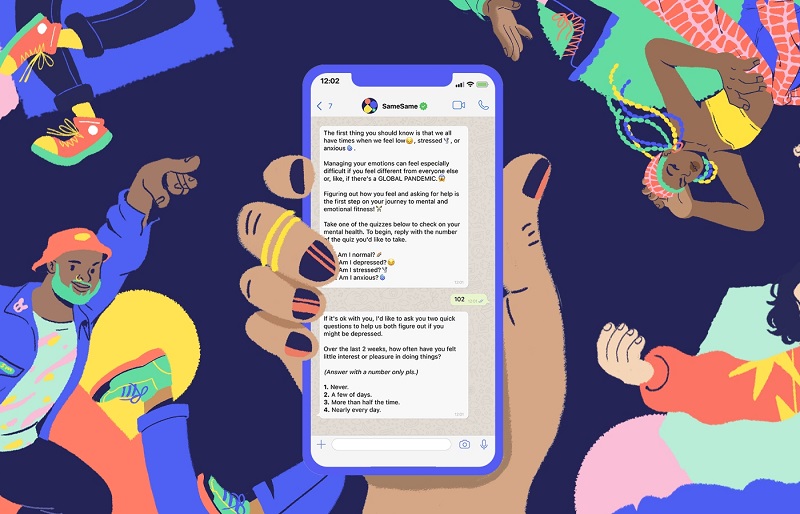
What inspired you to create SameSame?
The SameSame team is a collective of queer professionals from different walks of life who have come together to build what we wish we had when we were growing up. In very different ways, we’ve all had the chance to work on projects that have aimed to entertain, support, and empower young people in the Global South. Members of our team have helped build chatbots for the WHO, while other members of the team have created award-winning content that’s been screened at Sundance, often in collaboration with one another.
We’ve never had the chance, however, to take what we’ve learned and to build something that’s explicitly made for our community. Too often we’ve seen that online spaces and services just seem to replicate the same inequities we see in our day-to-day lives. On the other hand, we’ve also experienced how powerful it can be to discover who you are online, without fear of judgment. Eventually, we just felt compelled to do something about the lack of safe and affirming online spaces for LGBTQI+ (lesbian, gay, bisexual, transgender, queer and intersex) youth in the places we grew up, in the places we work day-to-day. We just lost patience, I suppose. Maybe it’s really true: We are the ones we’ve been waiting for.
What is SameSame, and how does it work?
We believe that everyone should have access to the support and space they need to navigate the highs and lows of adolescence and young adulthood, setting them up to achieve their potential no matter who they are, no matter where they live, no matter who they love.
SameSame was founded to develop and scale tailored support to LGBTQI+ youth across the world, equipping them with the tools they need to fight internalized stigma, anxiety and depression while boosting their mental wellbeing and connecting them to one another and potentially life-changing services.
SameSame’s first product is a chatbot, accessible via WhatsApp, that offers our users access to links to vetted resources, a chance to ask experts questions without judgment, the opportunity to read true-life stories from young people whose experiences mirror their own and an 8-session, self-guided cognitive behavioral therapy (CBT) course that’s based on an in-person intervention that’s been proven to work in North America.
Can you share an example of the issue SameSame aims to address?
In South Africa, once christened the rainbow nation, queer youth suffer from depression at four times the rate of their peers, despite the fact the country has one of the most liberal constitutions in the world when it comes to protecting sexual minorities. The situation in countries without legal protections, where same-sex activity and forms of gender expression are criminalized is even worse. Across the world, LGBTQI+ youth struggle with mental health challenges at exponentially higher rates, just because they’re different.
How will your participation within MIT Solve help SameSame grow?
We’ve been an official MIT Solver team for just a few weeks now, but already we’ve been invited to speak at panels, been introduced to new donors, and become part of an incredible community of innovators who are committed to creating more equitable health systems. Just from our conversations with the other MIT Solver teams, we’ve gotten new ideas and established new on-the-ground connections.
In the long run, however, the support and funding we’ve been lucky enough to receive is going to add rocket fuel to our growth plans. We have the means to take what we’re already doing in South Africa and Zimbabwe, where we’re piloting our chatbot, and adapt our content and service for one of the most populous countries in Asia. Our first step is to assemble a panel of young people who will localize and adapt our solution and help us create a brand that’s going to capture the attention (and the hearts, we hope) of LGBTQI+ people in a place that is in urgent need of affirming care.

How does your content differ from current technologies available now?
We’re developing our content so that it’s accessible, locally relevant, and responsive to the needs of young people. The young people we’re targeting live in places where high-speed internet is both difficult and expensive to access. They have access to fairly basic phones with limited memory. And they live in communities that aren’t ready to have meaningful conversations about social constructs like gender. Our content is designed to be light on data, so that it’s affordable for users on pre-paid mobile contracts who have to make every second count. It’s also accessible on WhatsApp, so we’re not asking users to download another app on a phone that has very limited space for more services.
Our content is also designed to reflect the realities of young people struggling with their identity in environments that are very different to the USA or Western Europe, places where it may NOT get better after you come out. We’re working with local youth and community activists and leaders in every country we work in to adapt our content so that we’re not imposing our ideas of gender and sexuality but letting them talk about their identities in a way that’s true and authentic. Finally, one of the incredible things about digital technologies is that we can learn more about our users the more they engage with us — and our plan is to make sure our content responds to them and that, over time, it becomes really personalized.
What do you hope for SameSame to accomplish in the future?
In the next five years, we want to put safe, secure and identity-affirming support within reach of more than 50 million LGBTQI+ youth, across the world. To make that a reality, this year we need to prove that our solution really works — that it does more than just engage users but is able to significantly boost their mental wellbeing — and that it can work not just in one part of the world, but anywhere young people are struggling with their identity with very little support and understanding.
Blue Butterfly
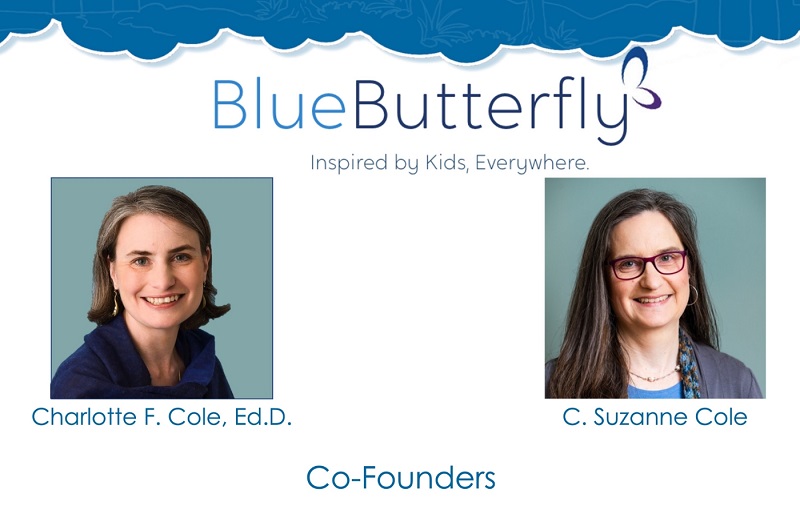
What inspired you to start Blue Butterfly?
My sister and co-founder, Charlotte, worked for twenty years as head of global education at Sesame Workshop, the makers of Sesame Street. Charlotte collaborated with teams in over thirty countries to bring local versions of Sesame Street — with their own Muppet characters and unique settings — to different regions of the world. She was instrumental, for example, in the development of Kami, a Muppet on the South African version of Sesame Street who lives with HIV. Inspired by the success of these programs, my sister and I were propelled to build on this model in Haiti, where too many children lack access to consistent education. We’ve been able to catalyze the creative energy of our local partners to create content that is both fun and educational — a magical mix that is a potent way to spark children’s lifelong love of learning.
What is Blue Butterfly, and how does it work?
Blue Butterfly’s mission is to inspire children to reach their full potential. Our strategy of developing and distributing high-quality, culturally relevant digital media builds on research that shows how engaging educational media can offer a compelling way to reach and teach large numbers of children in need.
Blue Butterfly’s role is to bring together the right local partners to create media that is meaningful to children in our target communities. In Haiti we have built a team of local educators, writers, musicians, illustrators, researchers, and media specialists who collaborate to create and disseminate our Lakou Kajou program. Blue Butterfly supports that team with training, technical support, and program management. Together we have developed innovative programming that we distribute to Haitian children using a variety of technologies.
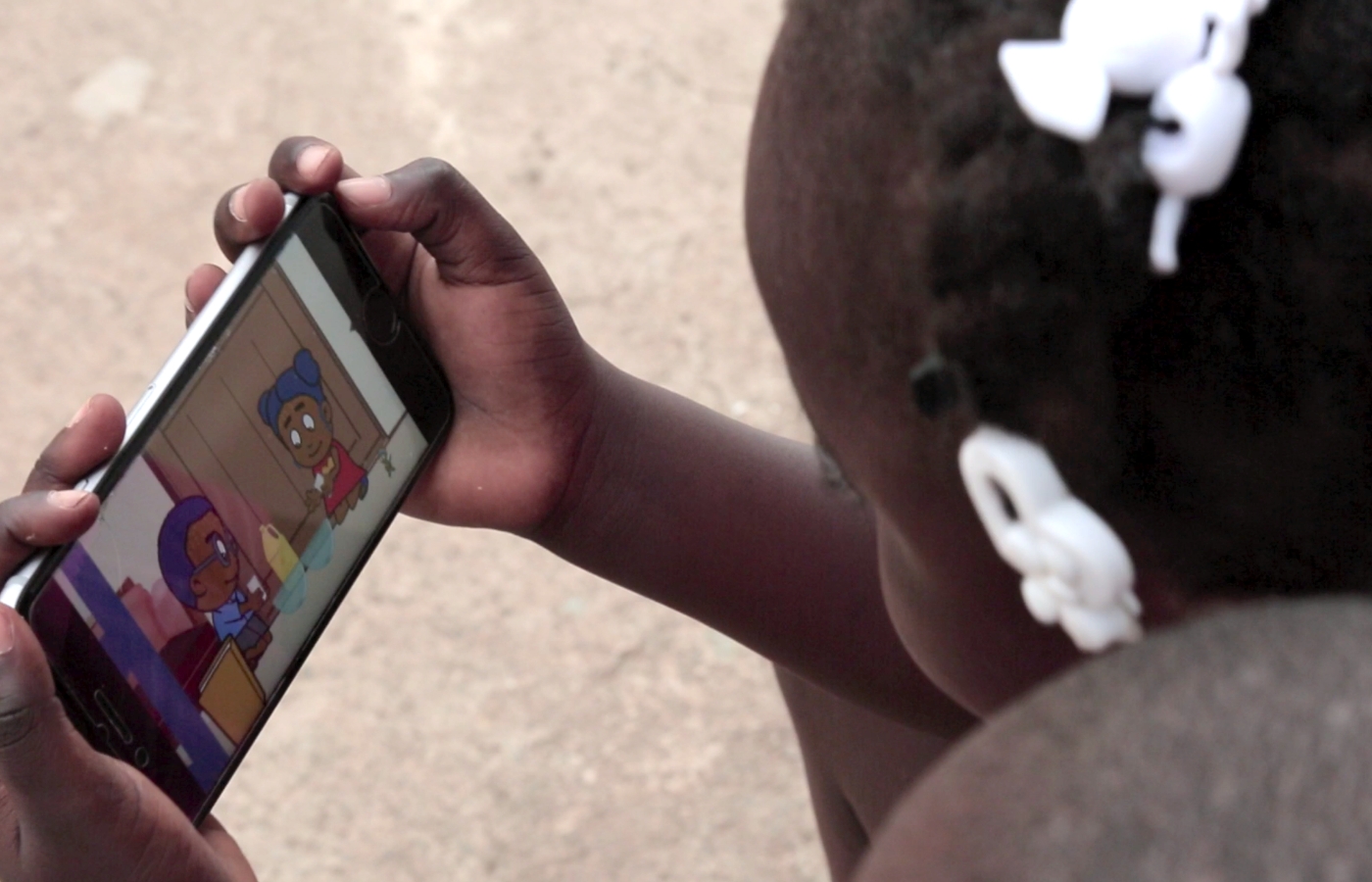
How will your participation within MIT Solve help Blue Butterfly grow?
Participation in MIT Solve couldn’t have come at a better time for Blue Butterfly. Building on our recent successes that marry our high-quality educational content with innovative technologies, Blue Butterfly is ready to expand our reach throughout Haiti.
We have an audacious goal: to reach all children in Haiti. We know we can’t reach that goal alone. We look forward to brainstorming with the experts in the MIT Solve community to 1) find new ways to recruit users to our platforms (especially those in hard-to-reach areas) and 2) discover other technology platforms that might work well for our content.
Given the communication barriers (lack of internet, etc.), do you have a plan to expand Blue Butterfly if the opportunity arises?
Our goal is to design content that reaches children using the technologies that are available to them. We use solutions that are high tech (e.g interactive voice response, chat bots, social media) as well as low/no tech (e.g. radio, print). We match the delivery mechanism to the needs of a specific locale or situation. Sometimes the “low-tech solution” is actually less feasible than a higher-tech option.
For example, distributing printed materials to schools can be more costly than providing a digital tablet pre-loaded with audio content. This sort of hybrid strategy often works well in communities with limited Internet access. One idea that we would like to flesh out is to create hubs where families could download our content to be used off-line at home.
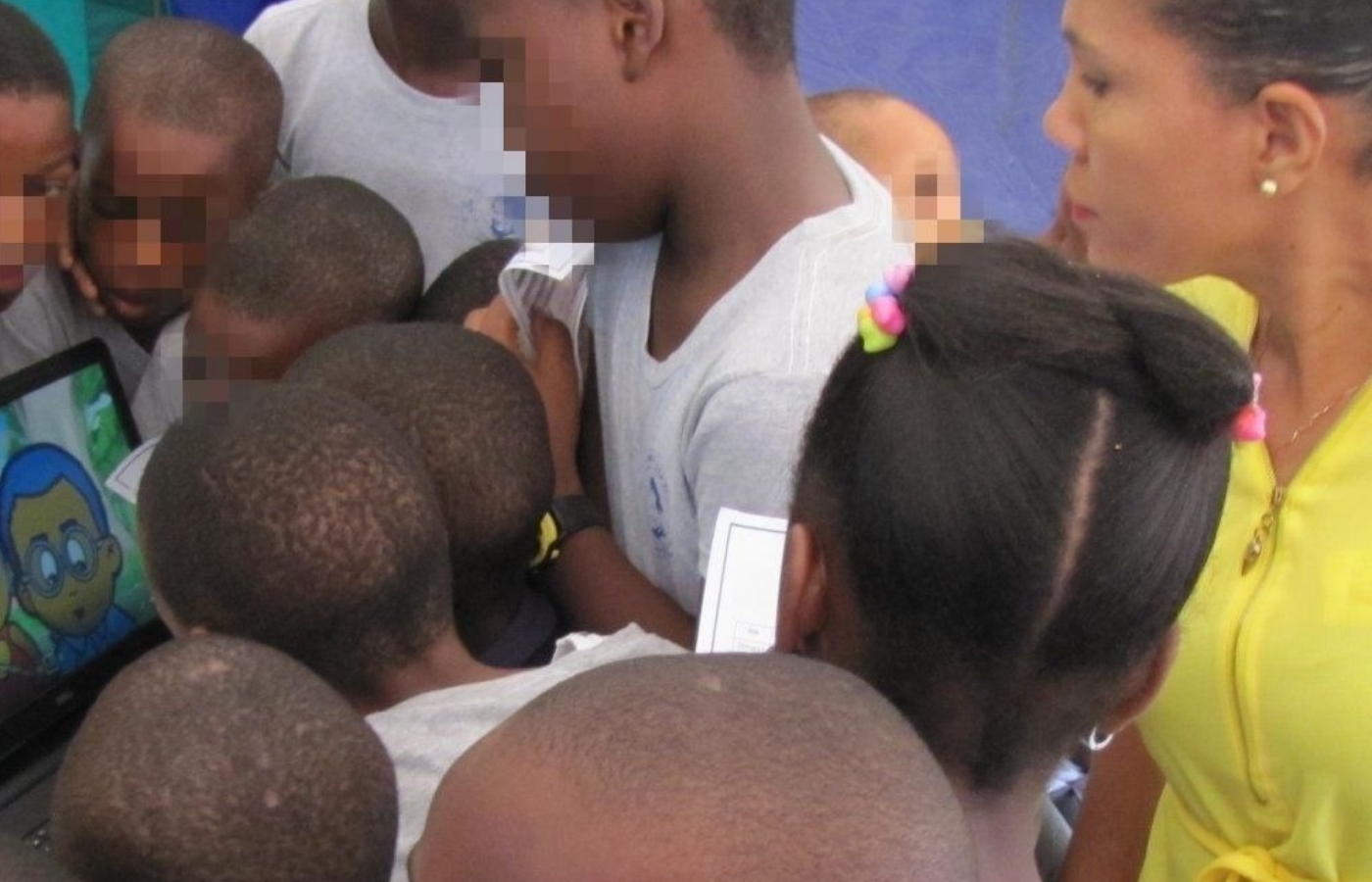
What does the word “innovation” mean to you?
For us, innovation means creatively solving a problem. Technology is often equated with innovation, but we feel that technology is just a tool. The content that is delivered on the technology is what really matters. Sometimes the innovation — the real tipping point — comes when using an existing technology or process in a new way. Or bringing that existing technology to a group who were previously left out.
What do you hope your innovation brings to the Haitian community as a whole?
We hope that Lakou Kajou not only improves educational outcomes for the children we reach, but also helps spark a revolution in the delivery of education in Haiti. We look for a time when all children in Haiti receive education that:
- is not interrupted by natural disasters, health emergencies, violence, or civil unrest
- is delivered in their home language, Haitian Creole
- sparks their curiosity and creativity
- prepares them to communicate and solve problems.
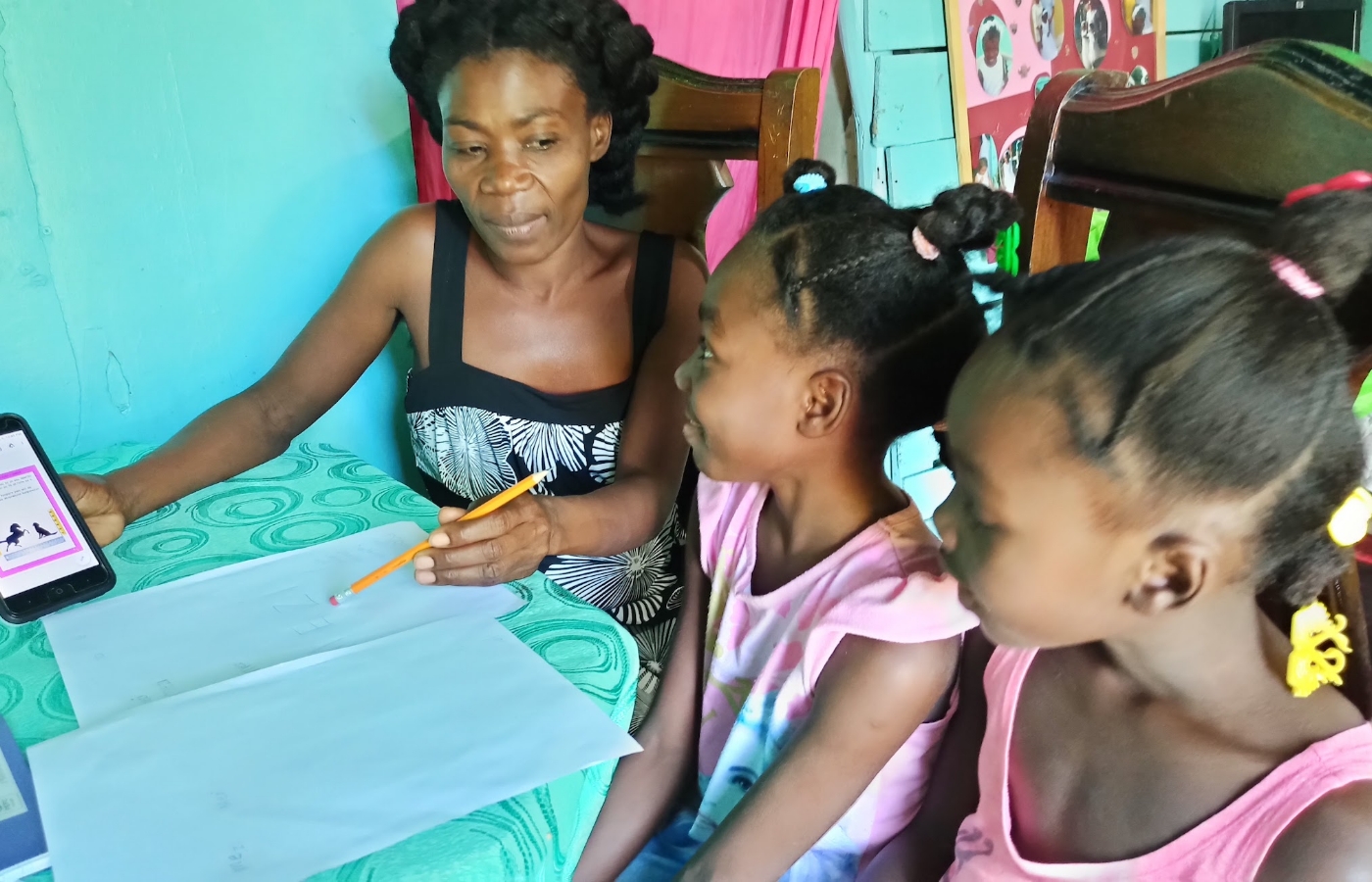
What do you hope for Blue Butterfly to accomplish in the future?
Blue Butterfly’s goal for this year is to build out the content available on our distance learning platforms. Currently we have only a small amount of content available to our users. Thanks to funding from MIT Solve and Living Proof, we will be able to expand the amount of content, which will make the products more enjoyable for our users.
Once the content is built out, our five-year goal is to expand the user base, using a hub-and-spoke model. We currently work closely with partners in three communities: Port-au-Prince, Port Salut (in the south) and Mirebalais (in the Central Plateau). We will use our relationships in these communities to hone our strategies for reaching as many children as possible. Then our next step will be to replicate that user recruitment model in other communities across the country.
Related Articles

Meet the Winners of Living Proof’s Women’s Leadership Solution Prize in Collaboration with MIT Solve
Read More

